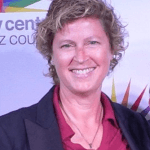Why diversity and inclusion programs are failing
There’s a difference between promoting diversity theoretically and being truly welcoming. Here’s how communicators can help build stronger teams and take the lead on inclusion.

Diversity and Inclusion (D&I) efforts are staples at many U.S.-based organizations so they can compete for talent and stay innovative.
However, many programs are failing. Harvard Business Review published research stating that three-fourths of underrepresented groups (women, racial and ethnic minorities, and LGBTQ+ employees, for example) report feeling no personal benefit from diversity and inclusion programs.
Plus, employee turnover costs and the exodus of women from mid-level careers are astounding. Communicators have to stop the bleeding, and they can start by taking action on these common mistakes:
1. Lack of intent in D&I strategy
Simon Sinek taught us the value of “why” and to focus on people, not products, but we’ve forgotten that lesson in the design of our D&I strategies.
In the hustle to keep up with the Joneses in the war over talent, especially in tech, having dedicated staff, employee groups and published diversity reports have become the norm—and get the nod from leadership that it’s “enough.”
Become a Ragan Insider member to read this article and all other archived content.
Sign up today
Already a member? Log in here.
Learn more about Ragan Insider.



